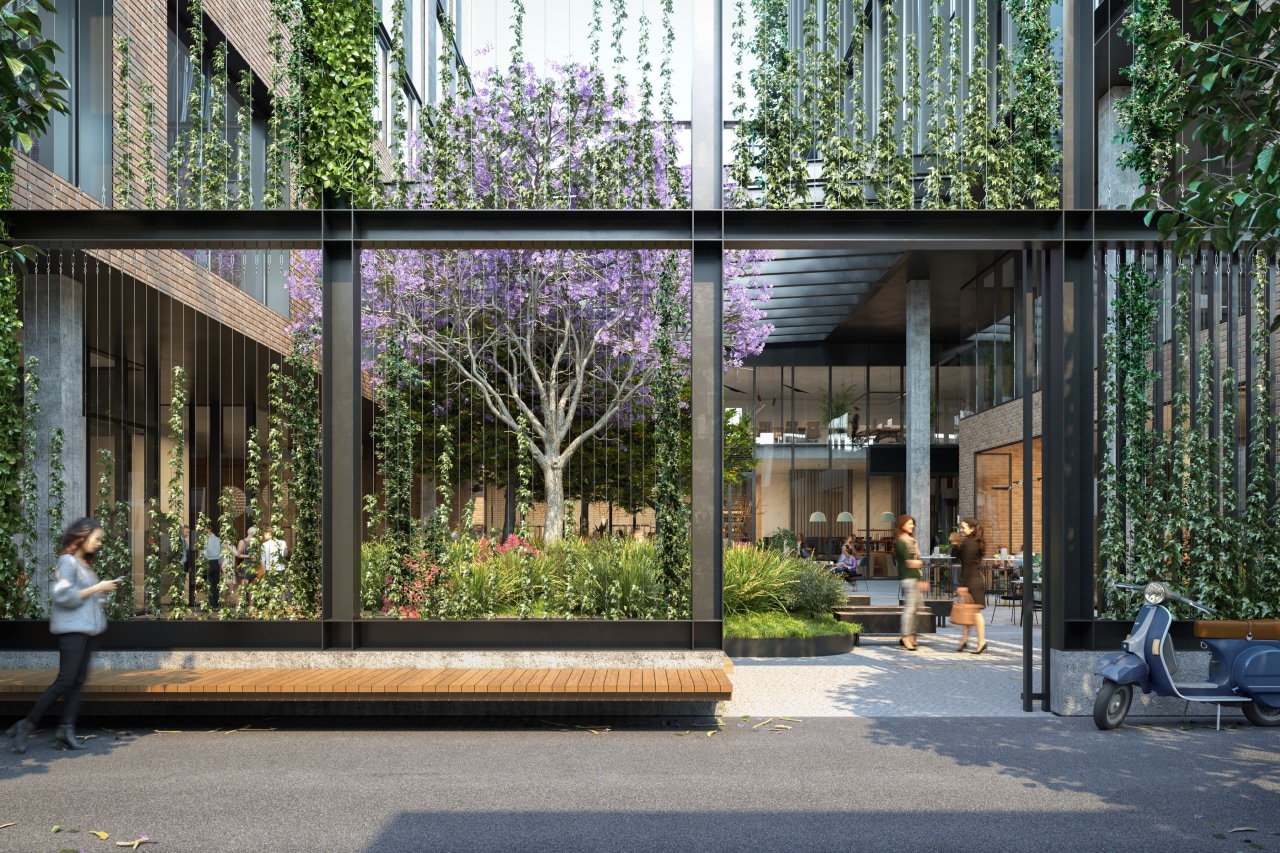When 'business community' means what it says
Sustainable collaboration works – these eco-friendly co-working spaces, constructed by Hansen Yuncken, example ways we're reshaping how we do business
Constructed by Hansen Yuncken
From the commercial constructors
In a post-pandemic world workers are returning to in-person work – but they’re not returning to traditional offices.
Instead, the demand for co-working spaces is surging.
These new office environments bring together entrepreneurs and workers from different backgrounds, promoting diversity, collaboration and inclusion.
Industry Lanes
Richmond’s Industry Lanes space, built by Australian construction company Hansen Yuncken, is one example of this new wave of modern working environments which are designed to support the growing desire for flexible working arrangements – data from the ADP® Research Institute shows that two-thirds of Australians would consider looking for another job if their employer insisted on a full-time return to in-office work.
Richard Hansen, Victorian State manager and executive director says Industry Lanes encapsulates modern rethinking of office designs.
"It’s an internal village which supports high levels of well-being, connection and amenity for its tenants.”
The project links three buildings to create a mixed use precinct with retail areas, communal amenities, open air courtyards and shared work zones spread across 24,937m².
“There’s a recent shift to recognise that office environments need to do more than provide a place for work – with full-time staff spending significant time in the office, these spaces must provide a holistic experience and a healthy environment," he says.
"Co-working spaces provide an additional benefit of community that can foster innovation and connection. Industry Lanes is the culmination of this rethink.”
While building companies look towards new design philosophies for working spaces, they are also drawing inspiration from the past.
The overall look and feel of Industry Lanes echoes Richmond’s industrial heritage, and the recently refurbished BICE Building in Adelaide brings modern design and sustainability to a State Heritage listed building.
The BICE Building’s co-working offering brings together entrepreneurs and innovators from many of South Australia’s leading industries, including space, defence and hi-tech sectors.
Lot Fourteen
The building sits in Lot Fourteen, a precinct designed and curated to be a collaborative ecosystem.
Much like Industry Lanes, Lot Fourteen ties together multiple buildings into one cohesive area, with a connecting glass canopy, offering breakout, lunch and gathering areas for both the public and occupants beneath.
Peter Salveson, CEO of Hansen Yuncken, says the BICE Building brings together three of Hansen Yuncken’s strengths: heritage restoration, innovative design, and sustainable construction.
“Reinventing heritage spaces with modern office trends and philosophies creates an environment steeped in culture and optimised for productivity and collaboration,” he says.
With a focus on environmentally conscious design, the BICE Building achieved a 6 Star Green Star certification.
The project used restoration techniques to repair and maintain much of the original 1920s fabric, preserving the original design aesthetic as well as supporting sustainable construction.
“Sustainability is a necessity in modern construction – sourcing sustainable materials and preserving existing materials where possible allows us to minimise our environmental impact," says Salveson.
Story by: Trendsideas
Home kitchen bathroom commercial design





